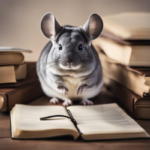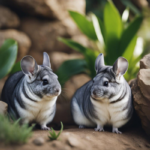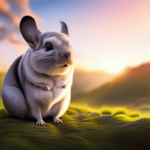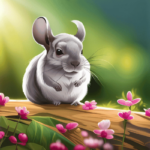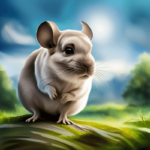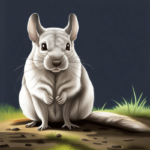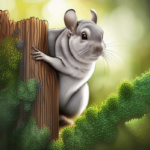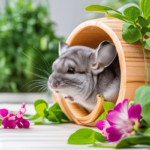In a world teeming with fascinating creatures, chinchillas stand out as enigmatic, soft-spoken marvels. These small, fluffy rodents have garnered a dedicated fan base, yet many people still wonder, “What is a chinchilla?” To quench your curiosity, we’ll embark on an exciting journey into the world of chinchillas, exploring their origins, characteristics, care requirements, and much more.
Introduction: The Intriguing World of Chinchillas
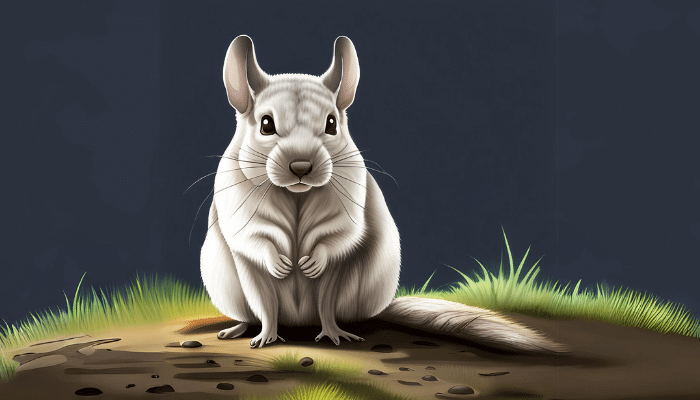
Chinchillas, originating from the Andes Mountains of South America. have long been sought after for their luxurious fur, which is incredibly soft and dense. Cold climates and their unique traits have made them an interesting subject of study and companionship.
The Chinchilla’s Origins
Chinchillas’ history is a tale that spans thousands of years. These small, furry creatures have thrived in the harsh conditions of the Andes Mountains. Chinchillas can be found in countries such as Peru, Bolivia, and Chile, and prefer rocky terrains as they provide natural hiding spots among the rocks and crevices.
The Incas, an ancient civilization that thrived in the Andes mountains of South America, had a deep appreciation for the remarkable qualities of chinchilla fur. Chinchillas were highly prized for their exceptionally soft and warm fur, which was considered a symbol of luxury and prestige.
Characteristics of Chinchillas

Understanding the characteristics of chinchillas is essential for anyone considering these adorable creatures as pets. So, what makes them unique?
Fur Perfection: The most distinctive feature of chinchillas is their fur. It is incredibly soft and dense, with approximately 60 hairs growing from a single hair follicle. This gives their fur a plush, velvety feel.
Size Matters: Chinchillas are petite rodents, with an average length of 10 to 15 inches (25-38 cm) and a weight ranging from 1 to 1.5 pounds (0.45-0.68 kg).
Big-Eyed Beauties: They have large, expressive eyes that provide them with excellent night vision.
Whisker Wonders: Chinchillas possess long, sensitive whiskers that help them navigate in the dark.
Clean Freaks: These creatures are meticulous groomers, often taking dust baths to maintain their fur’s cleanliness.
What is a Chinchilla’s Diet?

Chinchillas are herbivores, which means they primarily consume plant-based foods. Chinchilla diet consists of a variety of items to keep them healthy and happy.
Hay: Timothy hay and other grass are the mainstays of a chinchilla’s diet. It provides the necessary fiber to aid in digestion and keeps their ever-growing teeth in check.
Pellets: High-quality chinchilla pellets offer a balanced blend of essential nutrients. Make sure the pellets you choose are specially formulated for chinchillas.
Fresh Water: Access to clean, fresh water is crucial for a chinchilla’s well-being. Provide it in a sipper bottle to prevent spillage.
Occasional Treats: Chinchillas can enjoy occasional treats like dried fruits, but these should be given sparingly to avoid obesity.
Habitat and Housing for Chinchillas
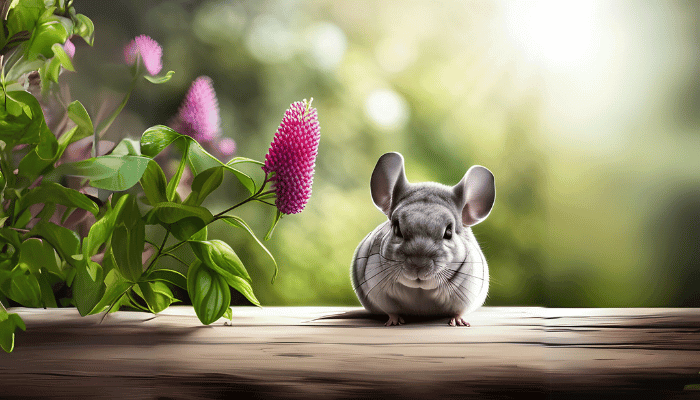
Creating the right environment for your chinchilla is essential to ensure their well-being and happiness. Let’s explore their habitat and housing needs.
Cage: A spacious cage with horizontal bars for climbing and exercise is ideal. Wire cages with solid flooring are preferred to protect their delicate feet. Here is some additional consideration information about chinchilla cages when it comes to choosing the right cage for your furry friend.
Bedding: Line the cage with appropriate bedding material, such as aspen shavings or fleece liners.
Hideouts: Chinchillas appreciate hideouts where they can retreat to when they desire privacy and safety.
Toys and Accessories: Provide wooden chew toys, tunnels, and platforms for mental stimulation and exercise.
Caring for Your Chinchilla
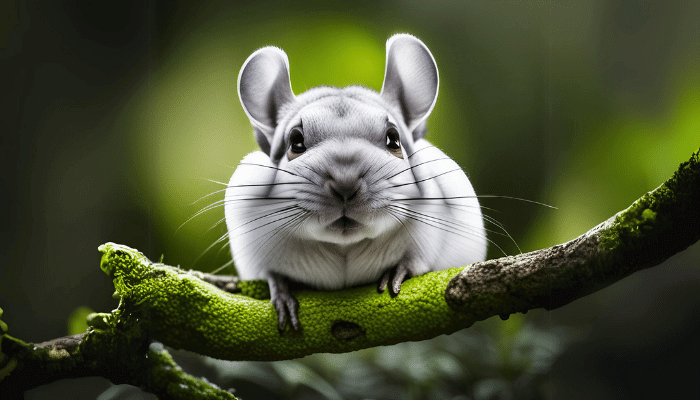
Chinchilla care is a multifaceted responsibility that revolves around ensuring the well-being and happiness of these adorable, furry creatures. Here are some important chinchilla care considerations:
Social Creatures: Chinchillas are social animals, so it’s best to keep them in pairs or small groups. Ensure proper introductions if introducing a new chinchilla to an existing group.
Temperature: Chinchillas are sensitive to high temperatures. Keep their environment cool and dry, ideally between 60-70°F (15-24°C).
Grooming: While chinchillas are excellent self-groomers, they also benefit from dust baths. Provide a dust bath for them, but be cautious not to overdo it, as excessive dust baths can lead to dry skin.
Health Checkups: Regular veterinary checkups are crucial to monitor your chinchilla’s health and address any issues promptly.
Breeding Chinchillas

Breeding chinchillas can be a rewarding but challenging endeavor. If you’re considering it, here’s what you need to know:
Age and Compatibility: Chinchillas are ready for breeding at around eight months of age. Ensure that the pair is compatible to avoid conflicts.
Gestation Period: Chinchilla pregnancies last approximately 111 days, resulting in a litter of one to six kits.
Caring for Kits: Chinchilla kits are born fully furred and with their eyes open. They are remarkably independent but should be left with their mother until weaning.
Common Health Issues in Chinchillas

Just like any other pet, chinchillas can experience health issues. Being aware of these problems can help you provide the best care possible.
Dental Problems: Chinchillas have continuously growing teeth, and if they don’t wear them down through chewing and gnawing, it can lead to dental issues.
Gastrointestinal Stasis: A slowdown or blockage in the digestive system can be caused by a poor diet or hairballs, which are common in chinchillas due to their grooming habits.
Fur Chewing: Some chinchillas develop a habit of chewing on their fur, which can lead to bald spots and skin irritation.
Respiratory Infections: Chinchillas are susceptible to respiratory infections, especially when exposed to drafts or damp conditions.
Conclusion: What is a Chinchilla?
Chinchillas are captivating creatures with a rich history and unique characteristics. Whether you’re considering them as pets or simply intrigued by their natural charm, understanding “What is a chinchilla?” is the first step in appreciating these furry marvels. By offering them proper care, companionship, and a safe environment, you can ensure these enigmatic rodents continue to enchant the world for generations to come.
Frequently Asked Questions

To provide a comprehensive understanding of chinchillas, here are answers to some frequently asked questions:
What do Chinchillas Eat?
Chinchillas primarily eat hay, high-quality pellets, and occasional treats like dried fruits. It’s essential to provide fresh water and avoid foods high in fat and sugar.
Can Chinchillas be Kept as Pets?
Yes, chinchillas can be kept as pets. They make delightful and entertaining companions, but they require specific care and attention to thrive.
How Do Chinchillas Keep Themselves Clean?
Chinchillas are meticulous groomers and maintain their fur by taking dust baths. They roll in fine dust to remove excess oils and keep their fur clean.
What is the Lifespan of a Chinchilla?
In captivity, chinchillas can live up to 10-20 years with proper care. However, their lifespan in the wild is typically shorter due to predation and environmental factors.
Are Chinchillas Endangered?
Yes, chinchillas are endangered in the wild due to overhunting for their fur. Conservation efforts are in place for their population.


